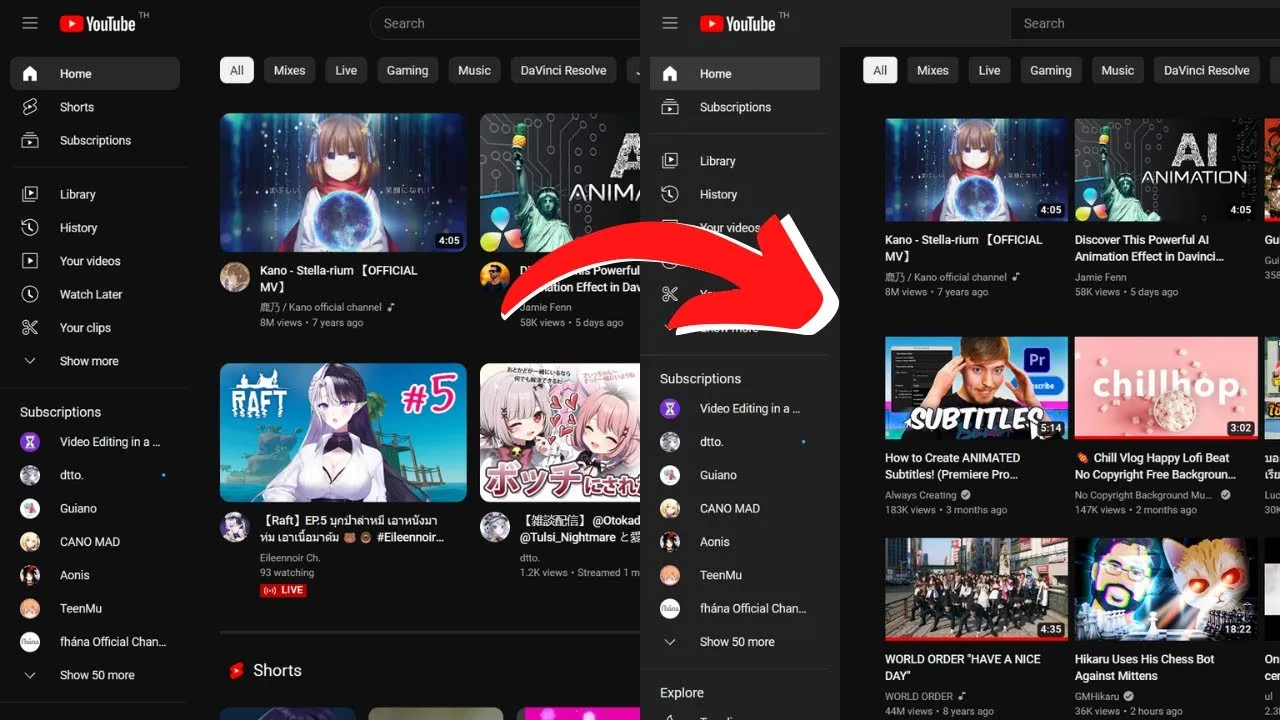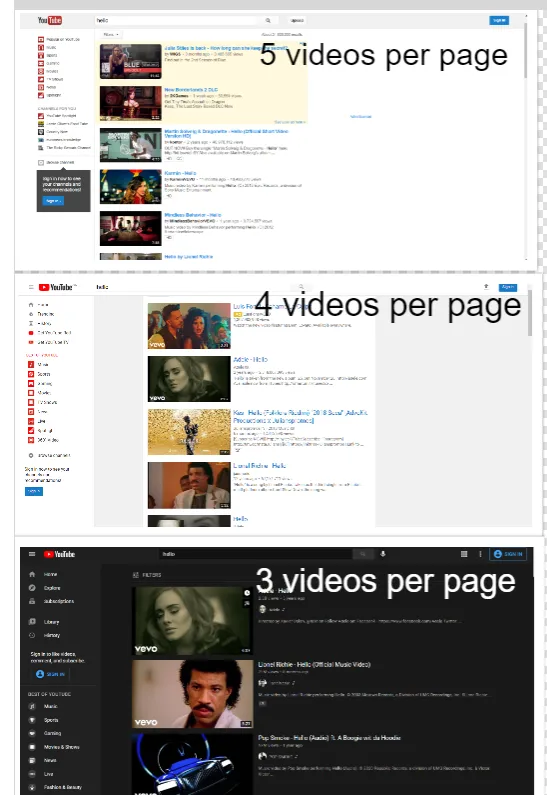YouTube, the giant of video sharing, is constantly evolving. One of the most noticeable changes is its layout, which has undergone several transformations over the years. These changes often spark conversations about user experience and functionality. But why does YouTube keep tweaking its design? In this blog post, we’ll explore the history of
History of YouTube Layout Changes

YouTube's layout changes are not just cosmetic; they reflect the platform's growth and the shifting needs of its users. Let's take a closer look at some key milestones in the evolution of YouTube's layout:
- 2005-2006: The Early Days - When YouTube first launched, the layout was simple and user-friendly. Videos were displayed in a straightforward list format, making it easy for users to navigate.
- 2010: The First Major Redesign - In 2010, YouTube introduced a more polished look. The homepage featured a grid layout, showcasing popular videos and personalized recommendations based on users' viewing habits.
- 2012: The Channel Design Update - This update allowed creators to customize their channels with banners, featured videos, and playlists. It encouraged a more branded experience for channels and helped creators connect with their audiences.
- 2015: The Material Design Update - Following Google's Material Design guidelines, YouTube's layout became cleaner and more intuitive. The addition of a sidebar for navigation improved user experience, making it easier to explore different content.
- 2020: The Dark Mode & Simplified Interface - YouTube rolled out dark mode for a more visually appealing experience, particularly for late-night viewers. The interface was streamlined to focus more on the content, reducing clutter.
- 2022: Increased Focus on Shorts - With the rise of short-form content, YouTube adapted its layout to highlight Shorts prominently, ensuring users could easily access this new format.
Each of these changes reflects YouTube's commitment to enhancing user engagement and adapting to new trends in digital content consumption. Understanding this history helps us appreciate the platform's ongoing evolution and its impact on how we interact with videos online.
Also Read This: Understanding the Acquisition Deal of Behance by Adobe
Impact on User Experience

YouTube's decision to change its layout has a significant impact on user experience, and it's essential to break this down to understand both the positive and negative aspects. The platform's new design aims to create a more streamlined and engaging interface, but how does this actually affect the average user?
Firstly, the layout is designed to enhance navigation. With clearer categories and sections, users can find content more effortlessly. This is especially beneficial for those who might not be familiar with the platform. Imagine being able to discover new channels or videos without feeling lost in a sea of thumbnails!
However, there are some downsides to consider. Some long-time users may feel disoriented by the changes. The shift in layout can lead to feelings of nostalgia for the earlier design, making it challenging for these users to adapt. Here’s a quick list of key impacts:
- Improved Navigation: Users can easily find their favorite content.
- Enhanced Engagement: The new layout encourages users to explore more videos.
- Learning Curve: Long-time users may struggle to adjust to the new design.
- Mobile Optimization: The layout is more responsive, making it easier to use on mobile devices.
Ultimately, while many users appreciate the fresh look and added features, the transition period can be a bit rocky. YouTube's challenge will be to balance innovation with user familiarity.
Also Read This: Licensing Fee Information for Shutterstock
How Creators Are Affected
When YouTube changes its layout, it doesn't just affect viewers; creators feel the impact too. The design changes can influence everything from content visibility to audience engagement, and it's crucial for creators to adapt quickly to these shifts.
One of the primary areas where creators are affected is in the way their content is displayed. A new layout can alter how videos are recommended, which can significantly impact a creator’s reach. For instance, if your video is buried under a new category or isn't showcased prominently, it might not get the views it deserves. This shift can lead to:
- Increased Competition: With a fresh layout, more creators might be encouraged to produce content, leading to a crowded space.
- Ad Revenue Fluctuations: If visibility decreases, so might the ad revenue, affecting many creators' livelihoods.
- Engagement Metrics: Changes in layout can impact how audiences interact with videos, which is critical for YouTube's algorithm.
Moreover, creators might need to rethink their strategies in light of the new layout. Adapting thumbnails, video titles, and even content styles to align with the new design can be crucial for maintaining or growing their audience. It’s a game of survival, and those who adapt quickly will likely thrive.
In conclusion, while YouTube's layout changes can provide fresh opportunities for engagement and discovery, they also pose challenges that creators must navigate carefully. Keeping an eye on analytics and audience feedback during this transition is more important than ever.
Also Read This: How to Make a Beautiful Cake at Home with Easy Baking Tips
Future Implications for YouTube's Design
As YouTube continues to evolve, its design changes often reflect broader trends in technology and user behavior. The recent layout update is no exception. Let's dive into some potential future implications for YouTube's design that could affect how users interact with the platform.
- Enhanced User Experience: One of the primary goals behind any design change is to improve user experience. As YouTube gathers data on how users interact with the new layout, we can expect further tweaks that cater to user preferences. This might include more personalized content recommendations or streamlined navigation features.
- Increased Focus on Mobile: With more users accessing YouTube via mobile devices than ever before, future designs will likely prioritize mobile-friendly features. We might see an even greater emphasis on vertical video formats and simplified interfaces tailored for smaller screens.
- Integration of New Technologies: As technologies like augmented reality (AR) and virtual reality (VR) become more mainstream, YouTube could incorporate these elements into its design. Imagine a layout that seamlessly blends traditional video with immersive experiences!
- Community Engagement Features: YouTube is increasingly becoming a space for community building. Future layouts may incorporate more social features, such as enhanced commenting systems, community tabs, and interactive content, allowing users to engage more deeply with creators.
- Responsive Design: As user preferences shift, responsive design will continue to be critical. YouTube may adopt a more adaptive layout that changes based on user behavior and preferences, ensuring a tailored experience for everyone.
In summary, the future of YouTube's design is likely to be influenced by user feedback, technological advancements, and the evolving digital landscape. It's an exciting time for the platform and its users!
Conclusion
In conclusion, YouTube's recent layout change is more than just a cosmetic update; it's a strategic move aimed at enhancing user experience and engagement. While some users may initially resist change, adaptations like these are essential for keeping the platform relevant and user-friendly.
As we've explored, the new design reflects current trends in digital consumption, particularly the mobile-first approach and the importance of community interaction. It's crucial for YouTube to stay ahead of the curve, and these design updates are a step in that direction.
So, how does this affect you as a user? For one, expect a more intuitive navigation experience and access to content that resonates with your interests. But also, be prepared for ongoing adjustments as YouTube continues to refine its platform based on user data and feedback.
Ultimately, embracing change can lead to more enjoyable and engaging experiences on YouTube. Whether you’re a casual viewer or a content creator, the evolving design is tailored to enhance your journey on this dynamic platform. So, keep an eye out for future updates; the best is yet to come!